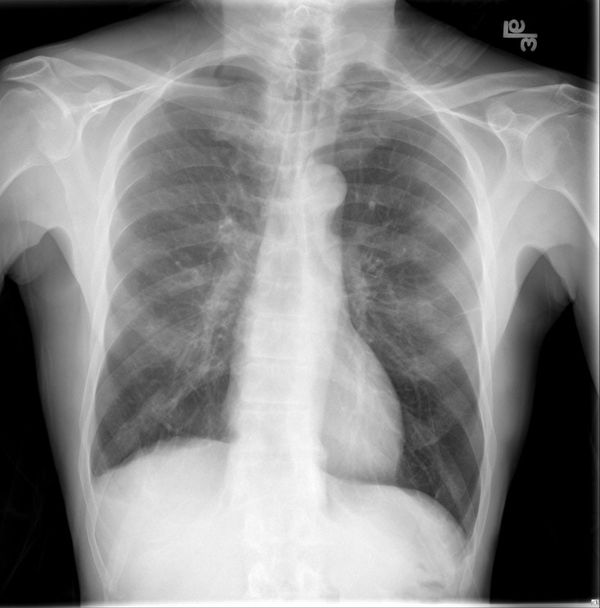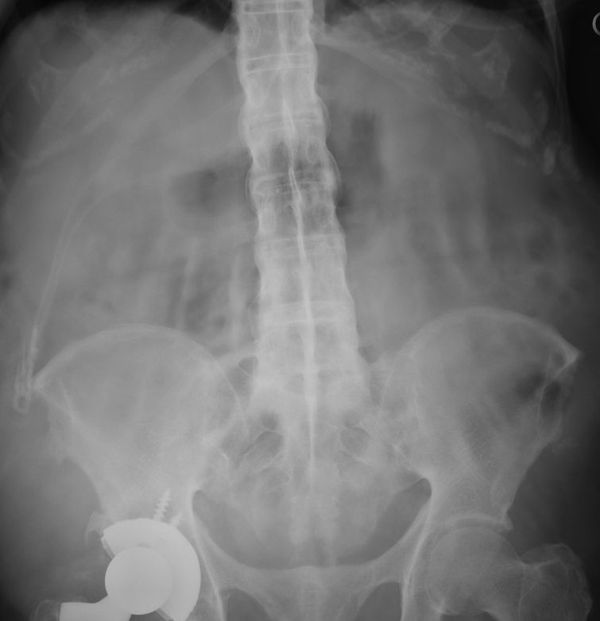Season 8 Case 36
History: wrist pain

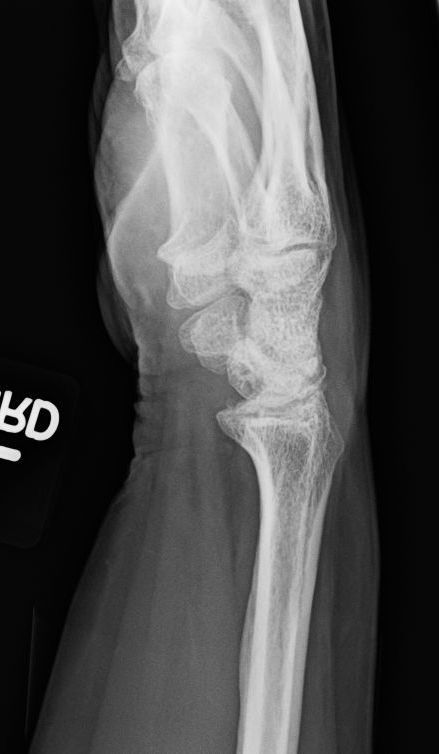
Answer: Dorsal Intercalated Segment Instability (DISI)
So what findings do we see:
1) Widened scapholunate distance =Injury to the S-L ligament yields widening of the distance, commonly referred to as the Terry Thomas sign (or for younger Rads the David Letterman Sign, the Madonna Sign, or the Michael Strahan Sign)
2) Abnormal scaphoid - Note the scaphoid’s appearance on the frontal exam. The radial margin is not normal consistent with a prior fracture deformity. Since scaphoid fracture is the most common carpal fracture, it makes sense a single injury could cause both the fracture and the S-L ligament injury
But what about the lateral exam?
3) Dorsal rotation of the lunate bone

The carpal bones and their ligaments have a complex relationship. Primarily the proximal and distal rows form a kind of “ring”. However, there is a three dimensional twist or torque to that ring. What that means is that when the is disruption of the ring, such as by complete tearing of the scapholunate ligament, not only does the ring widen, but the bones are allowed to “un-torque” or untwist.
When this happens the scaphoid will start rotating volarly (towards the palm) and the triquetrum/pisiform will start rotating dorsal (to the back of the hand). The lunate goes along with whichever it is connected to. And since we have torn the Scapholunate ligament, it rotates with the triquetrum dorsally - ie DORSAL intercalated segment instability.
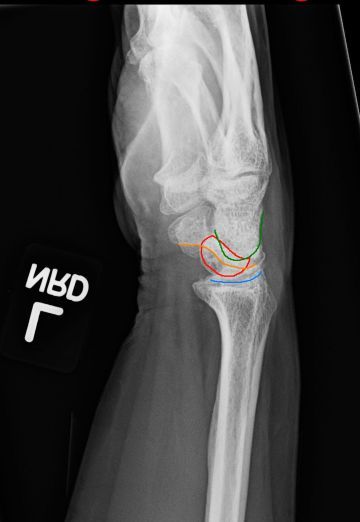
Interestingly, if instead you tear your lunotriquetral ligament, the lunate will then rotate with the scaphoid towards the palm (volarly) = VOLAR intercalated segment instability (VISI)
Orthopedics like measuring things so you can measure:
scapholunate angle (nl 30-60)
capitolunate angle (nl <30)
radiolunate angle (nl <15).
Here I drew in the bone outlines and measured the capitolunate angle which is >30 degrees (ie the dorsal tilt of the lunate)
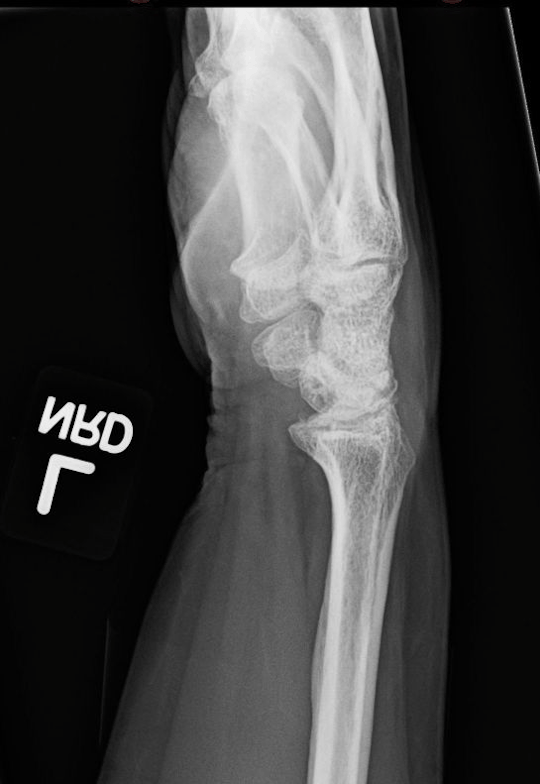
Generally these findings can be seen on X-ray. You can measure the S-L distance (nl <2-3) but it does vary upon gender. Generally >3mm abnl
If you want fancy pictures you can do an MRI to look for bone contusions or even an MR Arthrogram to eval the S-L ligament directly.
Clinically:
- Radial/dorsal wrist pain, esp w radial deviation or extension
- weakness/instability
Concurrently, as the bones are “untwisting”, you will get abnormal wear and osteoarthritis at the radioscaphoid joint and the capitate bone will gradually migrate proximally to fill the scaphol-lunate interval. This is termed Scapholunate Advance Collapse (SLAC wrist)



